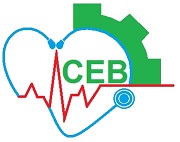This article will appear with 24×7’s June 2016 anniversary coverage.
By George Mills
It’s been more than 30 years since my first exposure to clinical engineering. Many things have changed, but some key principles have stayed the same.
I became the director of Environmental Services at a 160-bed Level 3 trauma hospital in central Minnesota in 1985. Given my construction background, this healthcare environment was brand-new to me, including managing Clinical Engineering. Fortunately, I met Jon Hilleren, CBET, who immediately impressed and relieved me.
I was impressed because not only were Jon’s technical skills sound, but he was a visionary for the time. Shortly after I started, he shared an idea to begin reaching out and supporting smaller hospitals that did not have skilled clinical engineers to perform scheduled preventive maintenance (PM) or repairs. Together, we grew the program to include a clinical engineer who would travel on a circuit in a van to help these smaller organizations. I was relieved when Jon assured me I would never have to be concerned about the medical equipment missing a scheduled PM, and that all our medical equipment would be reliable and safe for patient care.
What Jon had was the ability to be a creative thinker and problem solver—the two key attributes of a great healthcare technology management (HTM) professional. Despite all the changes to clinical engineering and healthcare technology, time and again these two traits make the difference.
Take my next significant encounter with healthcare technology. I worked with the American Society for Healthcare Engineering (ASHE) as the director of codes and compliance in the late 1990s. This was just as digital high-definition (HD) broadcasting was being rolled out. I recall one Saturday afternoon when a telemetry unit was knocked offline. When the clinical engineer arrived to troubleshoot, he first rebooted the equipment, which immediately started up. The next day the telemetry unit went down a second time. Only, when the clinical engineer arrived and attempted to reset the system, it did not respond although the equipment was fine.
Thinking outside the box, he recalled that a TV manufacturer was planning an HD demonstration across the street at a local mall. A bit of investigating revealed that the TV was broadcasting on the same frequency as the hospital’s telemetry unit, causing the telemetry to fail. (This discovery later led to an agreement with the Federal Communications Commission to protect hospital-based telemetry, managed by ASHE.)
There was also the instance a few years back when endoscopes were first being identified as contributing to healthcare-associated infections. I reached out to the HTM community, asking it to begin adding scopes to its equipment inventory. My intent was not so much to track endoscopes, but rather to motivate the HTM community to get involved by going to the endoscope processing room and reviewing the sterilization procedures. The skills HTM brought to these rooms made a real impact on these processes.
Creative thinking and problem solving were integral to these examples. Fortunately, those same character traits are evident today wherever I speak or meet with HTM professionals—and they need to be now more than ever.
Moving from the bench to patient care delivery, today’s clinical engineer must develop the relationship between IT and patient care. Our industry is about more than just performing scheduled maintenance and repairs on an IV pump. Now more than ever, it requires systems thinking to understand how an IV device is part of a medication-delivery system that needs to correctly identify the patient, communicate with the pharmacy to verify that the drug is appropriate and won’t interact with other medications, is prescribed at the right dose, and will be delivered at the correct dose rate. This requires HTM to understand all the systems involved behind the scenes, train and develop the users, ensure the equipment can be supported by the organization’s intranet, and provide council to leadership as new equipment and technologies are
being considered.
This same initiative must be evident when new equipment is brought into the organization. Often it is not the IT department that will be troubleshooting the installation, but the HTM team. IT may be able to program and prepare the network, but ensuring that the system’s clinical requirements are met often falls to HTM, especially when it comes time to verify that a system actually delivers the intended outcomes. HTM must be able to work with IT to ensure that the network can support the medical equipment, and that the medical equipment is readily available and reliable.
Over the past 30 years, including since my return to The Joint Commission in 2005, I have become convinced that the resources available from the Association for the Advancement of Medical Instrumentation, the American College of Clinical Engineering, and 24×7 continue to strengthen the HTM industry. Certification opportunities confirm the skills and dedication of its members to the field. New higher education programs are available, equipping the next generation of technicians with the skills to continue to protect patients.
Today’s HTM professionals must be competent, creative problem solvers. They must be an established resource to all clinical users of medical equipment. They must be a stable, reliable team that manages today’s healthcare technology—just as they were when I first encountered them more than three decades ago.
George Mills, MBA, FASHE, CEM, CHFM, CHSP, is director, Department of Engineering, The Joint Commission.
Source: 24×7 Magazine






